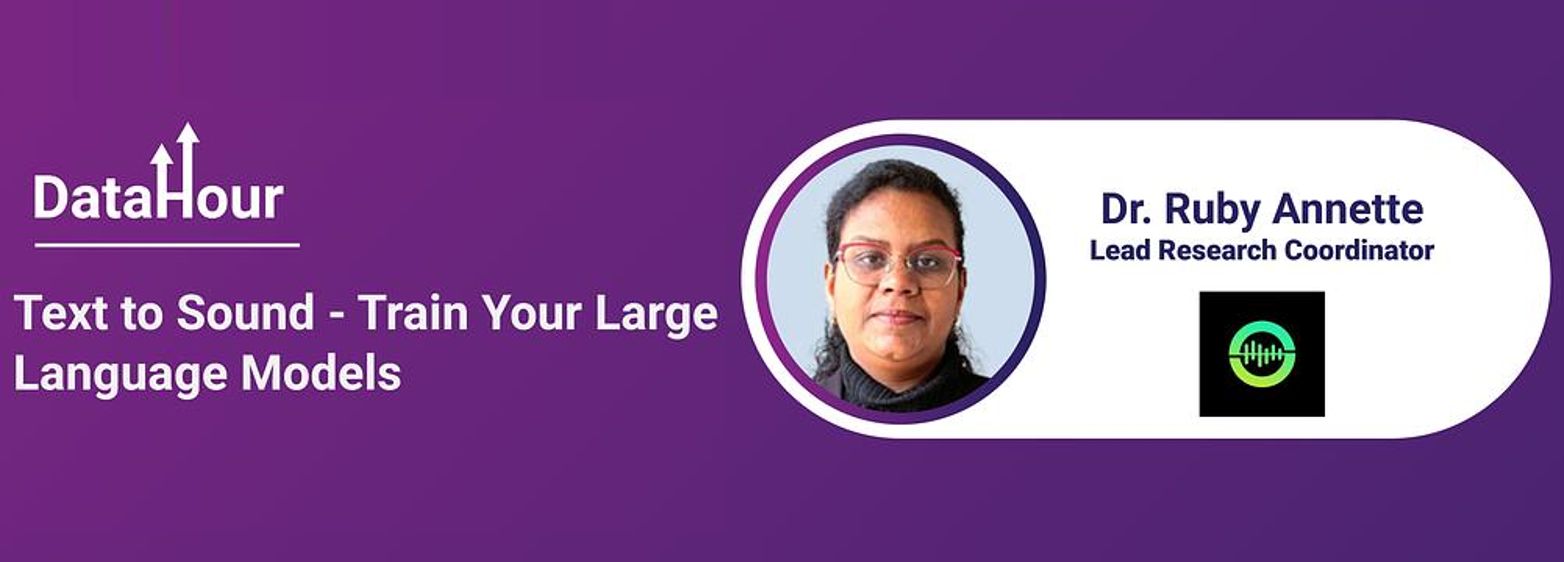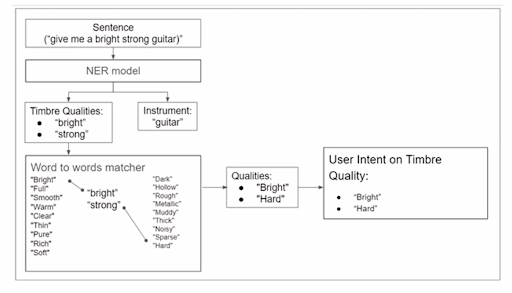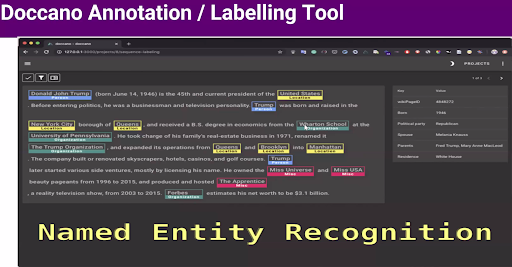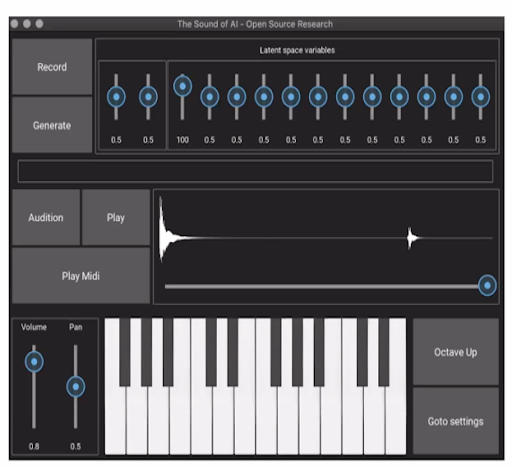Introduction
Imagine a world where AI can take a musician’s voice command and transform it into a beautiful, melodic guitar sound. It’s not science fiction; it results from groundbreaking research in the open-source community, ‘The Sound of AI’. In this article, we’ll explore the journey of creating Large Language Models (LLMs) for ‘Musician’s Intent Recognition’ within the domain of ‘Text to Sound’ in Generative AI Guitar Sounds. We’ll discuss the challenges faced and the innovative solutions developed to bring this vision to life.

Learning Objectives:
- Understand the challenges and innovative solutions in creating Large Language Models in the ‘Text to Sound’ domain.
- Explore the primary challenges faced in developing an AI model to generate guitar sounds based on voice commands.
- Gain insights into future approaches using AI advancements like ChatGPT and the QLoRA model for improving generative AI.
Table of Contents
Problem Statement: Musician’s Intent Recognition
The problem was enabling AI to generate guitar sounds based on a musician’s voice commands. For instance, when a musician says, “Give me your bright guitar sound,” the generative AI model should understand the intent to produce a bright guitar sound. This requires context and domain-specific understanding since words like ‘bright’ have different meanings in general language but represent a specific timbre quality in the music domain.

Dataset Challenges and Solutions
The first step to training a Large Language Model is to have a dataset that matches the input and desired output of the model. There were several issues that we came across while figuring out the right dataset to train our LLM to understand the musician’s commands and respond with the right guitar sounds. Here’s how we handled these issues.
Challenge 1: Guitar Music Domain Dataset Preparation
One significant challenge was the lack of readily available datasets specific to guitar music. To overcome this, the team had to create their own dataset. This dataset needed to include conversations between musicians discussing guitar sounds to provide context. They utilized sources like Reddit discussions but found it necessary to expand this data pool. They employed techniques like data augmentation, using BiLSTM deep learning models, and generating context-based augmented datasets.

Challenge 2: Annotating the Data and Creating a Labeled Dataset
The second challenge was annotating the data to create a labeled dataset. Large Language Models like ChatGPT are often trained on general datasets and need fine-tuning for domain-specific tasks. For instance, “bright” can refer to light or music quality. The team used an annotation tool called Doccano to teach the model the correct context. Musicians annotated the data with labels for instruments and timbre qualities. Annotating was challenging, given the need for domain expertise, but the team partially addressed this by applying an active learning approach to auto-label the data.

Challenge 3: Modeling as an ML Task – NER Approach
Determining the right modeling approach was another hurdle. Should it be seen as identifying topics or entities? The team settled on Named Entity Recognition (NER) because it allows the model to identify and extract music-related entities. They employed spaCy’s Natural Language Processing pipeline, leveraging transformer models like RoBERTa from HuggingFace. This approach enabled the generative AI to recognize the context of words like “bright” and “guitar” in the music domain rather than their general meanings.

Model Training Challenges and Solutions
Model training is critical in developing effective and accurate AI and machine learning models. However, it often comes with its fair share of challenges. In the context of our project, we encountered some unique challenges when training our transformer model, and we had to find innovative solutions to overcome them.
Overfitting and Memory Issues
One of the primary challenges we faced during model training was overfitting. Overfitting occurs when a model becomes too specialized in fitting the training data, making it perform poorly on unseen or real-world data. Since we had limited training data, overfitting was a genuine concern. To address this issue, we needed to ensure that our model could perform well in various real-world scenarios.
To tackle this problem, we adopted a data augmentation technique. We created four different test sets: one for the original training data and three others for testing under different contexts. In the content-based test sets, we altered entire sentences for the context-based test sets while retaining the musical domain entities. Testing with an unseen dataset also played a crucial role in validating the model’s robustness.
However, our journey was not without its share of memory-related obstacles. Training the model with spaCy, a popular natural language processing library, caused memory issues. Initially, we allocated only 2% of our training data for evaluation due to these memory constraints. Expanding the evaluation set to 5% still resulted in memory problems. To circumvent this, we divided the training set into four parts and trained them separately, addressing the memory issue while maintaining the model’s accuracy.
Model Performance and Accuracy
Our goal was to ensure that the model performed well in real-world scenarios and that the accuracy we achieved was not solely due to overfitting. The training process was impressively fast, taking only a fraction of the total time, thanks to the large language model RoBERTa, which was pre-trained on extensive data. spaCy further helped us identify the best model for our task.
The results were promising, with an accuracy rate consistently exceeding 95%. We conducted tests with various test sets, including context-based and content-based datasets, which yielded impressive accuracy. This confirmed that the model learned quickly despite the limited training data.

Standardizing Named Entity Keywords
We encountered an unexpected challenge as we delved deeper into the project and sought feedback from real musicians. The keywords and descriptors they used for sound and music differed significantly from our initially chosen musical domain words. Some of the terms they used were not even typical musical jargon, such as “temple bell.”
To address this challenge, we developed a solution known as standardizing named entity keywords. This involved creating an ontology-like mapping, identifying opposite quality pairs (e.g., bright vs. dark) with the help of domain experts. We then employed clustering methods, such as cosine distance and Manhattan distance, to identify standardized keywords that closely matched the terms provided by musicians.
This approach allowed us to bridge the gap between the musician’s vocabulary and the model’s training data, ensuring that the model could accurately generate sounds based on diverse descriptors.
Future Approaches with ChatGPT and QLoRA Model
Fast forward to the present, where new AI advancements have emerged, including ChatGPT and the Quantized Low-Rank Adaptation (QLoRA) model. These developments offer exciting possibilities for overcoming the challenges we faced in our earlier project.
ChatGPT for Data Collection and Annotation
ChatGPT has proven its capabilities in generating human-like text. In our current scenario, we would leverage ChatGPT for data collection, annotation, and pre-processing tasks. Its ability to generate text samples based on prompts could significantly reduce the effort required for data gathering. Additionally, ChatGPT could assist in annotating data, making it a valuable tool in the early stages of model development.
QLoRA Model for Efficient Fine-Tuning
The QLoRA model presents a promising solution for efficiently fine-tuning large language models (LLMs). Quantifying LLMs to 4 bits reduces memory usage without sacrificing speed. Fine-tuning with low-rank adapters allows us to preserve most of the original LLM’s accuracy while adapting it to domain-specific data. This approach offers a more cost-effective and faster alternative to traditional fine-tuning methods.
Leveraging Vector Databases
In addition to the above, we might explore using vector databases like Milvus or Vespa to find semantically similar words. Instead of relying solely on word-matching algorithms, these databases can expedite finding contextually relevant terms, further enhancing the model’s performance.
In conclusion, our challenges during model training led to innovative solutions and valuable lessons. With the latest AI advancements like ChatGPT and QLoRA, we have new tools to address these challenges more efficiently and effectively. As AI continues to evolve, so will our approaches to building models that can generate sound based on the diverse and dynamic language of musicians and artists.
Conclusion
Through this journey, we’ve witnessed the remarkable potential of generative AI in the realm of ‘Musician’s Intent Recognition.’ From overcoming challenges related to dataset preparation, annotation, and model training to standardizing named entity keywords, we’ve seen innovative solutions pave the way for AI to understand and generate guitar sounds based on a musician’s voice commands. The evolution of AI, with tools like ChatGPT and QLoRA, promises even greater possibilities for the future.
Key Takeaways:
- We’ve learned to solve the various challenges in training AI to generate guitar sounds based on a musician’s voice commands.
- The main challenge in developing this AI was the lack of readily available datasets for which specific datasets had to be made.
- Another issue was annotating the data with domain-specific labels, which was solved using annotation tools like Doccano.
- We also explored some of the future approaches, such as using ChatGPT and the QLoRA model to improve the AI system.
Frequently Asked Questions
Ans. The primary challenge is the lack of specific guitar music datasets. For this particular model, a new dataset, including musician conversations about guitar sounds, had to be created for our dataset to provide context for the AI.
Ans. To combat overfitting, adopted data augmentation techniques and created various test sets to ensure our model could perform well in different contexts. Additionally, we divided the training set into parts to manage memory issues.
Ans. Some future approaches for improving generative AI models include using ChatGPT for data collection and annotation, the QLoRA model for efficient fine-tuning, and vector databases like Milvus or Vespa to find semantically similar words.
About the Author: Ruby Annette
Dr. Ruby Annette is an accomplished machine learning engineer with a Ph.D. and Master’s in Information Technology. Based in Texas, USA, she specializes in fine-tuning NLP and Deep Learning models for real-time deployment, particularly in AIOps and Cloud Intelligence. Her expertise extends to Recommender Systems and Music Generation. Dr. Ruby has authored over 14 papers and holds two patents, contributing significantly to the field.
DataHour Page: https://community.geeksforgeeks.org/c/datahour/datahour-text-to-sound-train-your-large-language-models




